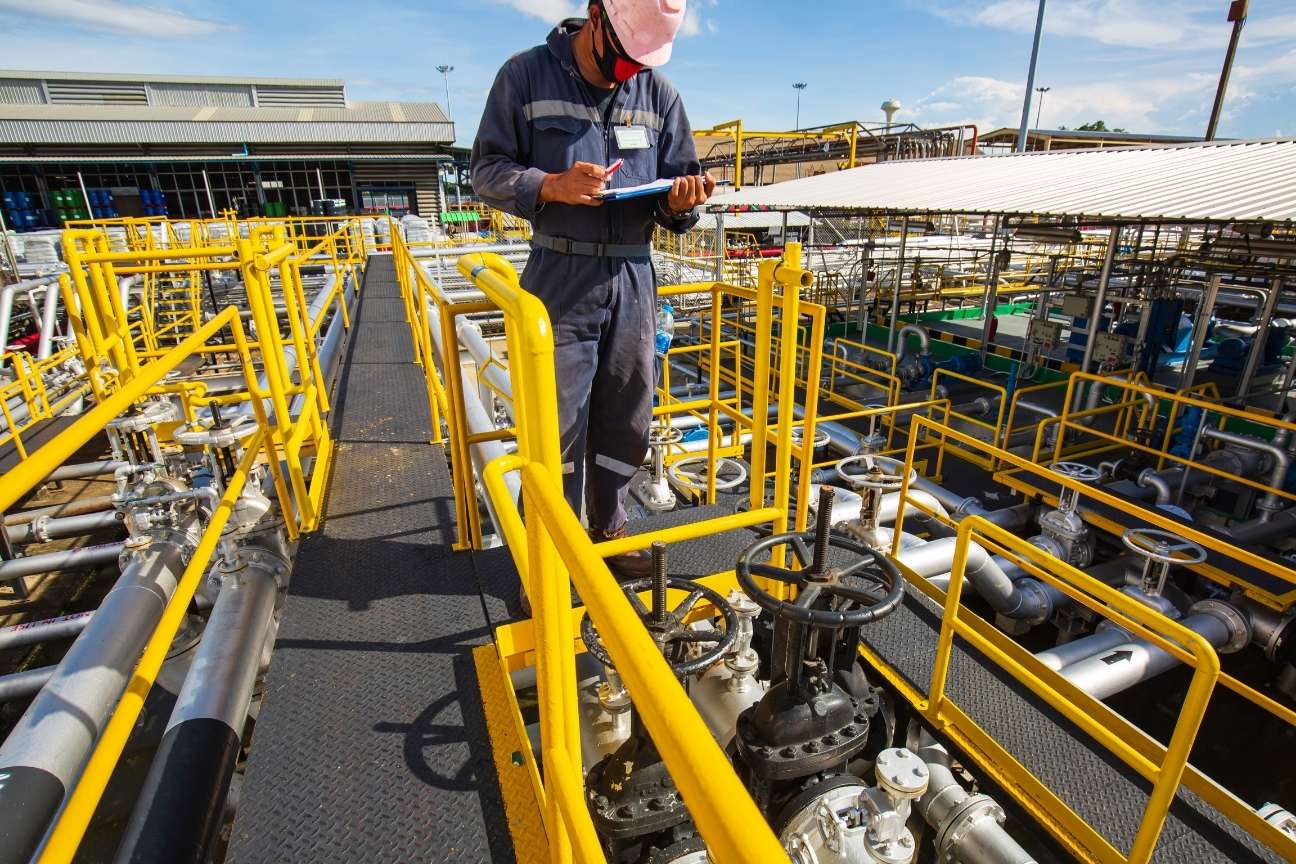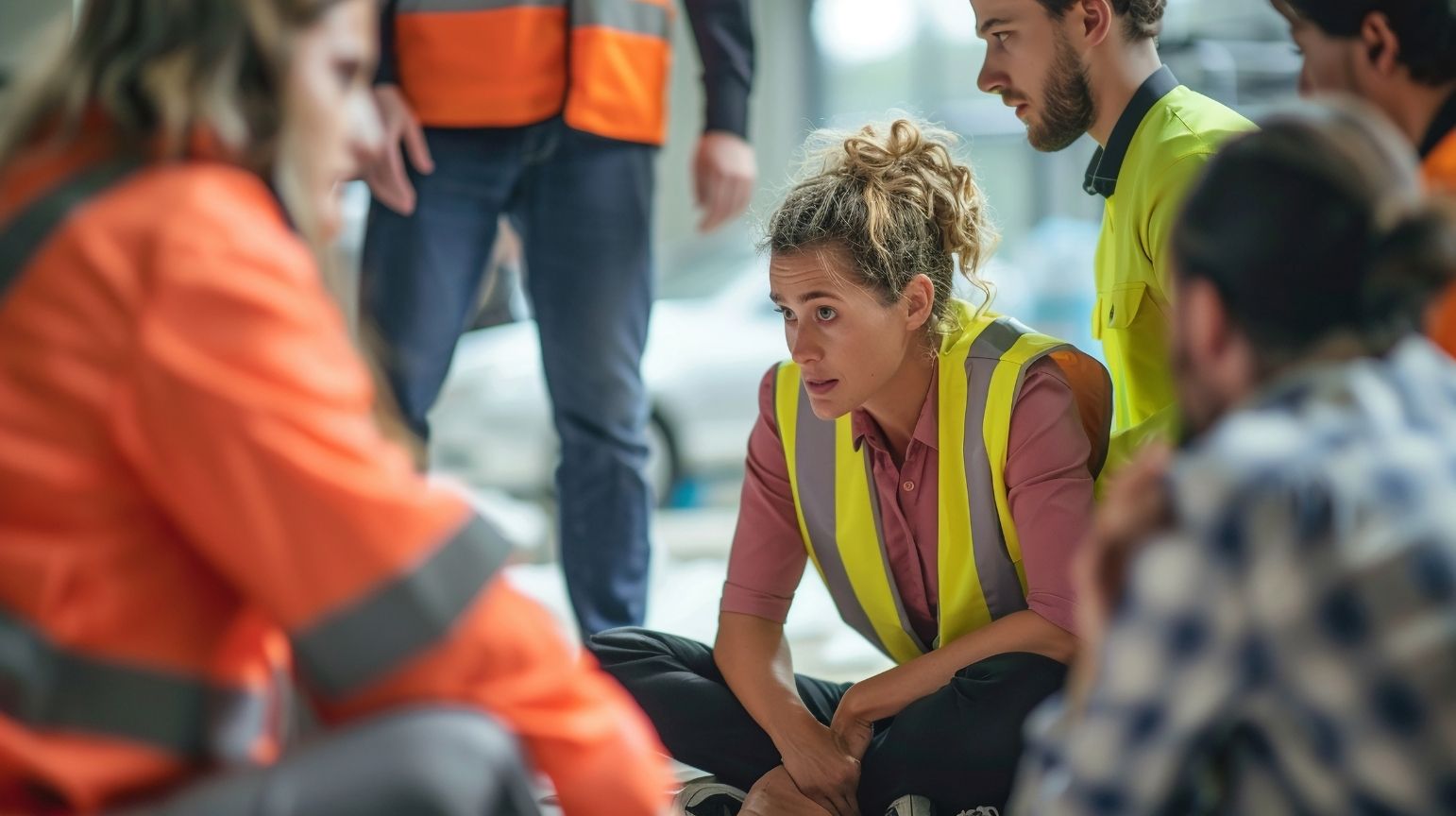Introduction
Pipelines are the backbone of oilfield construction. They transport crude oil and natural gas from extraction sites to refineries and distribution networks. The effectiveness of these pipelines can make or break operations in this industry. Therefore, it’s crucial to understand the importance of diligent pipeline inspection and maintenance.
Effective inspection and maintenance practices ensure safety and compliance. They help prevent leaks, spills, and accidents that can lead to severe environmental impacts. Moreover, non-compliance can result in hefty fines and damage to a company’s reputation. This introduction highlights the need for robust practices to safeguard pipelines and promote longevity.
In this article, we will dive into the best practices for pipeline inspection and maintenance. We’ll discuss how to schedule, employ various techniques, and utilize technology for smarter inspections. This comprehensive approach aims to enhance safety, ensure compliance, and maintain pipeline integrity efficiently.
Understanding Pipeline Inspection
What is Pipeline Inspection?
Pipeline inspection plays a crucial role in oilfield construction. It ensures the integrity and safety of the extensive network of pipelines that transport oil and gas. Essentially, pipeline inspection refers to the systematic examination of pipelines to check for any signs of damage or wear.
Types of Inspections
This practice helps in identifying issues before they escalate into major problems, such as leaks or ruptures. There are various types of inspections typically performed, including:
- Visual Inspections: Technicians manually check for visible signs of deterioration.
- Ultrasonic Testing: A more sophisticated method that evaluates the internal condition of the pipeline.
Each inspection type serves a different purpose and is essential for comprehensive pipeline management.
Importance of Pipeline Inspection
Why does pipeline inspection matter? First and foremost, poorly maintained pipelines pose significant safety risks.
Risks of Pipeline Failures
A leak or rupture can lead to catastrophic incidents, endangering both workers and the surrounding community. The financial implications are severe as well, with potential for:
- Financial Losses: Damage control and repairs can be expensive.
- Legal Repercussions: Companies may face lawsuits or fines.
Additionally, the environmental impact of failing pipelines cannot be overstated. These incidents often result in spills that can:
- Harm ecosystems,
- Pollute water sources,
- Contribute to long-term environmental damage.
Long-Term Consequences
The consequences extend beyond just immediate safety risks; they affect public perception and can lead to stricter regulations.
Thus, regular and effective pipeline inspections are vital. They not only ensure compliance with industry standards but also safeguard people, the environment, and a company’s reputation in the long run. Emphasizing a proactive approach to inspections can lead to better outcomes and prevent small issues from becoming major disasters.
Ultimately, investing in robust inspection practices pays off in safety, compliance, and eco-friendliness.
Best Practices for Pipeline Inspection
When it comes to pipeline inspection, adopting best practices is crucial for maximizing safety and efficiency. Regular inspections help identify potential risks before they escalate into costly problems. Here are some key practices to keep in mind.
Regular Inspection Scheduling
Establishing a structured inspection schedule cannot be overstated. A well-timed inspection routine ensures you catch issues early. The frequency of inspections often depends on several factors, including the pipeline’s age, location, and service conditions. For instance, older pipelines or those in high-risk areas may require more frequent checks. By aligning your inspection schedule with these factors, you can better manage risks and comply with regulations.
Employing Various Inspection Techniques
Diversity in inspection methods is essential for comprehensive assessments. Here are some common techniques:
- Visual Inspections: These provide a straightforward way to identify surface-level issues. Trained personnel can visually assess the integrity of pipelines directly.
- Ultrasonic Testing: This method uses high-frequency sound waves to detect flaws within the pipeline material. It’s particularly effective at measuring wall thickness.
- Magnetic Particle Inspection: This technique is ideal for locating surface and near-surface defects. Magnetic fields help reveal cracks or discontinuities.
- Radiographic Testing: Utilizing X-rays or gamma rays, this allows inspectors to view the internal structure. It’s useful for detailed defect analysis.
Combining these techniques enhances overall inspection effectiveness. A multi-faceted approach allows for better risk management and ensures a thorough understanding of pipeline condition.
Utilizing Technology in Inspections
The integration of technology has revolutionized pipeline inspections. Here are some cutting-edge tools making waves in the industry:
- Drones: These aerial devices provide a safe, efficient means of inspecting hard-to-reach areas. Drones can quickly survey large sections of pipeline, increasing inspection speed.
- Smart Pigs: These sophisticated tools travel through the pipeline, gathering comprehensive data on its condition. They help identify corrosion, leaks, and structural issues without disrupting flow.
- Leak Detection Systems: Advanced systems monitor fluctuations in pressure and flow. They offer real-time alerts, allowing for swift responses to potential leaks.
Incorporating these technologies correlates with improved accuracy and efficiency. By harnessing innovative tools, you can significantly enhance pipeline inspection processes and overall integrity management.
By following these best practices in pipeline inspection, you position your operations for better safety, compliance, and performance. Stay ahead of potential pitfalls by being proactive and embracing a culture of regular, thorough inspections.
Maintenance Strategies for Pipeline Integrity
Maintaining the integrity of pipelines in oilfield construction is crucial. Implementing effective maintenance strategies ensures safety and compliance while minimizing environmental risks. Here’s how companies can approach pipeline maintenance.
Preventative Maintenance
Preventative maintenance focuses on avoiding future issues by addressing potential problems before they occur. This proactive strategy extends the life of pipelines and reduces costly repairs.
Key Preventative Measures
- Regular Inspections: Conduct visual and technical inspections regularly to identify signs of wear or damage.
- Corrosion Protection: Use protective coatings and cathodic protection to combat corrosion.
- Routine Cleaning: Clean pipelines periodically to remove deposits that can cause blockages.
These measures can significantly reduce the likelihood of leaks and failures.
Corrective Maintenance
Corrective maintenance happens when an issue is detected during inspections. It involves repairing or replacing damaged components to restore pipeline integrity.
Swift Response is Vital
Delaying corrective actions can lead to larger problems, including environmental contamination. Here’s what companies should do:
- Quickly Assess Issues: As soon as a problem is identified, assess the severity and potential impact.
- Implement Repairs Promptly: Schedule repairs immediately to minimize disruption and risk.
- Document Actions: Keep detailed records of all corrective measures taken for future reference.
Predictive Maintenance
Predictive maintenance is a sophisticated approach that uses data analytics and monitoring tools to predict when maintenance should occur. This strategy differs from traditional maintenance, often based on scheduled inspections.
Techniques and Technologies
Techniques for predictive maintenance include:
- Data Analysis: Use analytics to monitor pipeline performance and detect anomalies.
- Sensors: Install sensors on pipelines to collect real-time data on pressure, flow, and temperature.
- Software Tools: Leverage software to analyze data trends and forecast when maintenance is needed.
By adopting predictive maintenance, companies can optimize resources and enhance pipeline reliability, performing maintenance only when necessary.
Documentation and Reporting
Importance of Detailed Records
Effective documentation is vital for pipeline inspection and maintenance. Keeping thorough records provides a clear history of all inspections and repairs. These records serve multiple purposes. First, they offer insights into the pipeline’s condition over time. Second, they help in identifying trends that may indicate potential issues. For instance, if a particular section frequently requires repairs, it may be time to reassess that pipeline’s integrity.
Moreover, detailed records aid in risk assessment. They enable teams to identify areas vulnerable to failure based on historical data. Consequently, this proactive approach can significantly reduce the chances of accidents and environmental incidents. By systematically documenting inspection findings, maintenance activities, and repairs, firms can enhance their overall safety measures.
Compliance and Regulations
Adhering to industry standards and regulations is crucial for oilfield construction. Local and federal regulations govern pipeline safety, requiring companies to meet specific inspection and maintenance criteria. Failure to comply can result in fines, legal issues, and reputational damage.
Examples of key regulations include the Pipeline and Hazardous Materials Safety Administration (PHMSA) standards in the U.S. These standards outline inspection techniques, reporting requirements, and frequency of assessments. Keeping records that align with these regulations not only promotes compliance but also fosters accountability within the organization.
Effective reporting isn’t just a bureaucratic necessity; it’s a critical part of maintaining pipeline integrity. Regular audits of documentation ensure that companies prioritize transparency and diligence. By focusing on meticulous records and compliance, oilfield construction firms can cultivate trust with regulators and the communities they operate in.
Training and Skill Development
Importance of Trained Personnel
In pipeline inspection and maintenance, skilled workers are essential. Trained personnel bring expertise that ensures operations run smoothly. They can quickly identify issues and implement solutions. This not only prevents costly downtime but also enhances safety. A well-trained team understands the latest industry standards and practices. Therefore, ongoing training is vital to keep everyone up to date.
Organizations should invest in regular training programs. This includes both on-the-job training and formal educational courses. Institutions that specialize in oilfield construction often offer relevant programs. These programs cover crucial topics such as safety protocols, inspection techniques, and maintenance strategies. By equipping workers with the right skills, companies can improve their operational efficiency and compliance with regulations.
Creating a Safety Culture
Fostering a safety culture is key in oilfield construction. A workplace that prioritizes safety encourages proactive behaviors. Workers are more likely to report hazards when they feel valued and heard. This collaborative environment leads to better communication and fewer accidents.
To build this culture, leadership should model safe practices. Implementing regular safety meetings and training sessions helps reinforce this commitment. In addition, recognizing and rewarding safe behavior can inspire others. When employees see tangible acknowledgment for their efforts, they are more likely to engage in safety initiatives.
Incorporating safety into everyday practices also makes a significant difference. Simple steps, such as discussing safety topics in pre-shift meetings, keep safety top of mind. Regular drills and emergency preparedness exercises can also strengthen the team’s readiness.
By focusing on training and nurturing a safety culture, oilfield construction firms can achieve greater pipeline integrity. Ultimately, this will lead to enhanced inspection and maintenance outcomes, benefiting both workers and the environment.
Challenges in Pipeline Inspection and Maintenance
Pipeline inspection and maintenance face several hurdles. Understanding these challenges is crucial for developing effective strategies. Let’s delve into some of the key issues.
Environmental Factors
Environmental conditions can severely impact pipeline performance. Extreme weather, temperature fluctuations, and corrosive elements often pose significant risks. For instance, heavy rain or flooding can weaken soil integrity around pipelines, compromising their support and increasing the chance of leaks.
Mitigation Strategies
To mitigate these risks, consider the following strategies:
- Regular Monitoring:
Implement a schedule for monitoring environmental conditions. Keeping tabs on changes allows for quick responses to potential threats. - Protection Measures:
Use protective coatings and barriers. These can shield pipelines from corrosion and wear caused by environmental factors. - Site Evaluation:
Conduct thorough evaluations of pipeline locations. Choosing less hazardous areas can enhance long-term integrity.
By focusing on these proactive measures, firms can effectively reduce the impact of environmental challenges on pipeline safety and efficiency.
Technological Limitations
While technology plays a key role in pipeline inspections, it comes with its own set of challenges. Limited access to advanced technology can hinder inspection quality. Moreover, some technologies may not be suitable for all pipeline types.
Common Technological Challenges
Common challenges include:
- Data Overload:
Advanced inspection techniques, like drones and smart pigs, generate vast amounts of data. Sifting through this information to find actionable insights can be overwhelming. - High Costs:
Investing in sophisticated technology can be expensive. Smaller firms may struggle to afford the latest equipment and tools. - Training Needs:
New technologies often require specialized training. Ensuring that personnel are skilled in using these tools can be a significant hurdle.
Continual improvement in technology is vital. Addressing these limitations through innovation can lead to better inspection outcomes and safer pipelines. Firms must stay up to date on the latest advancements to enhance their inspection and maintenance processes.
Conclusion
In the ever-evolving world of oilfield construction, pipeline inspection and maintenance are not just regulatory boxes to check. They are essential practices that protect lives, preserve the environment, and ensure efficient operations.
The Importance of Best Practices
Implementing best practices in this area can significantly reduce risks associated with pipe failures, which might otherwise lead to serious accidents and costly clean-ups. Here are some key aspects to consider:
- Regular Inspections: Establish a structured inspection schedule.
- Proactive Maintenance: Use proactive strategies to address potential issues before they escalate.
- Right Technology: Integrate advanced technologies for accurate assessments.
Enhancing Pipeline Integrity
Effective pipeline management hinges on several core strategies:
- Diverse Techniques: Employ various techniques for pipeline assessment.
- Detailed Records: Maintain comprehensive records for every inspection and maintenance activity.
- Compliance Standards: Adhere to industry compliance standards to sharpen operational efficiency.
Ongoing Education and Skill Development
As challenges persist—like environmental influences or technological constraints—the industry must prioritize:
- Ongoing Education: Provide continuous learning opportunities for staff.
- Skill Development: Equip personnel with the right knowledge to enhance safety and sustainability.







